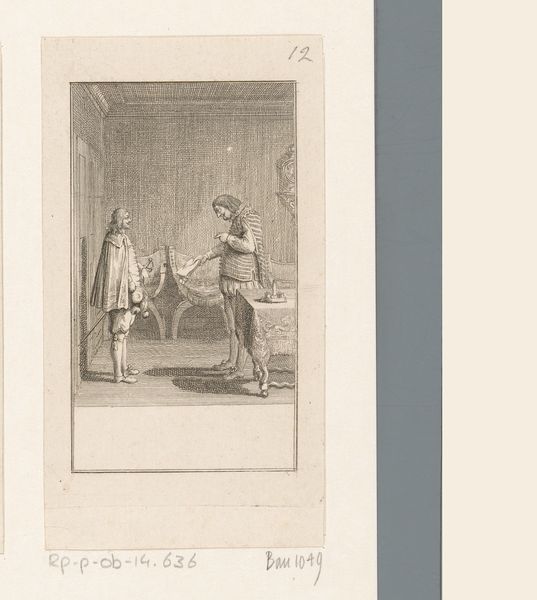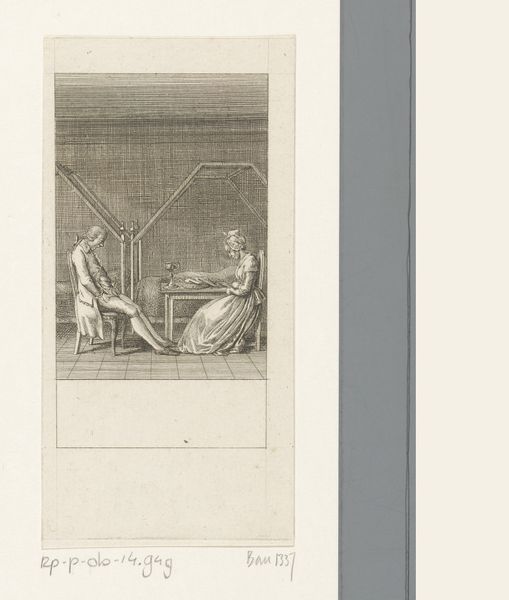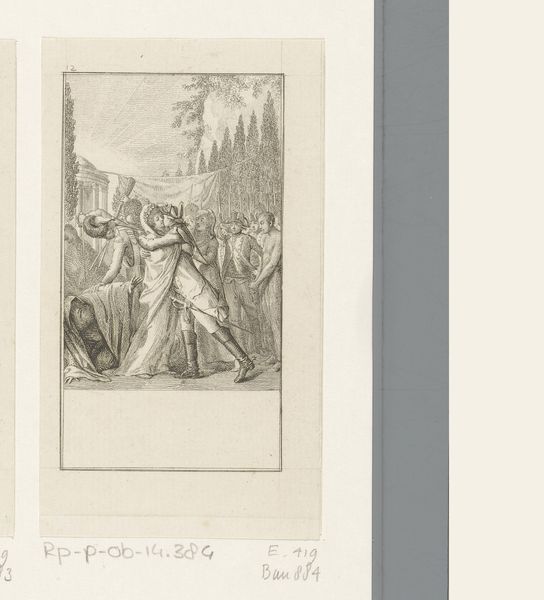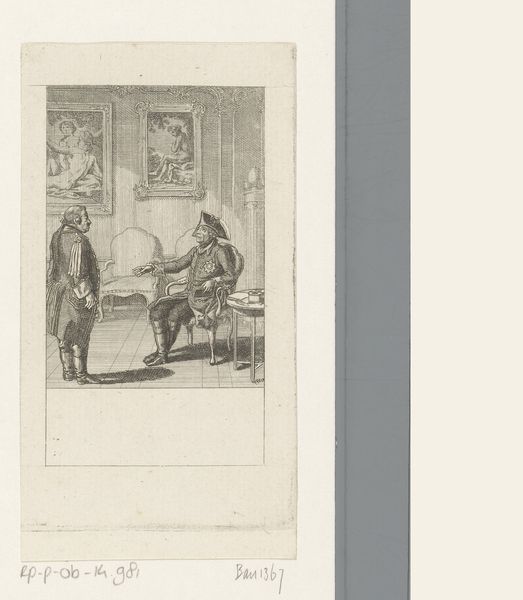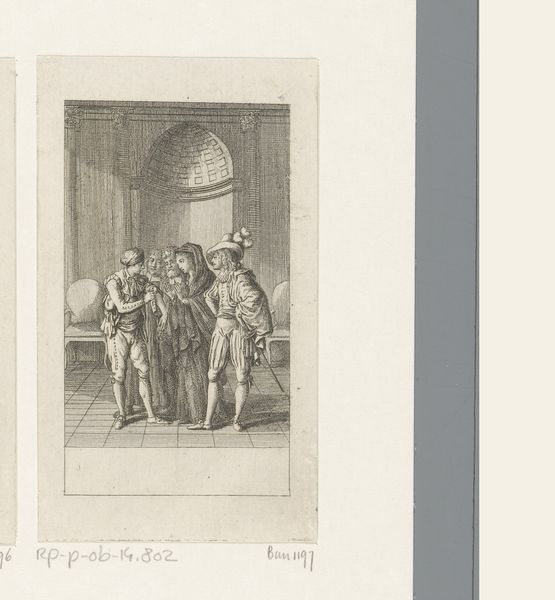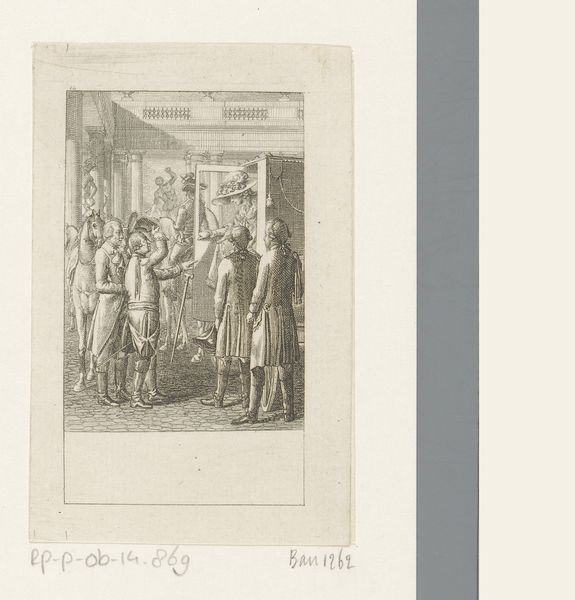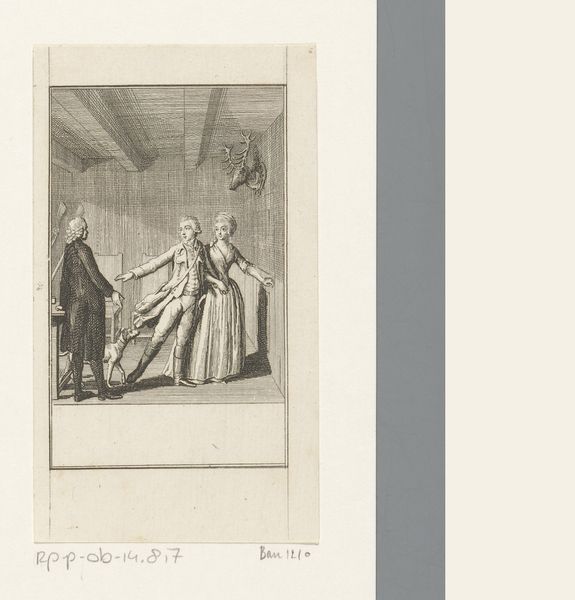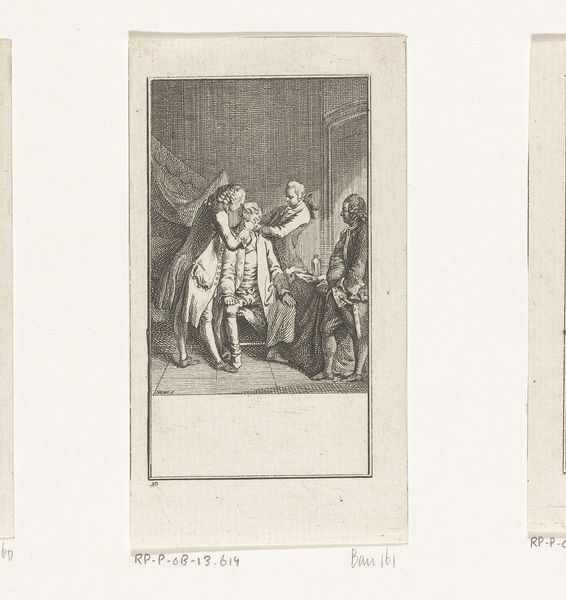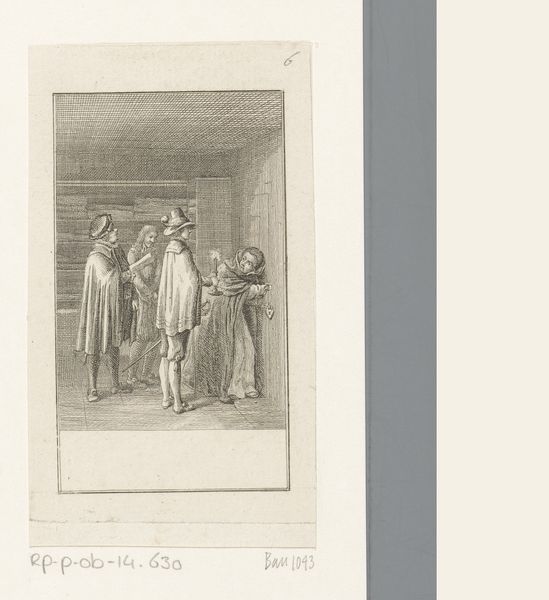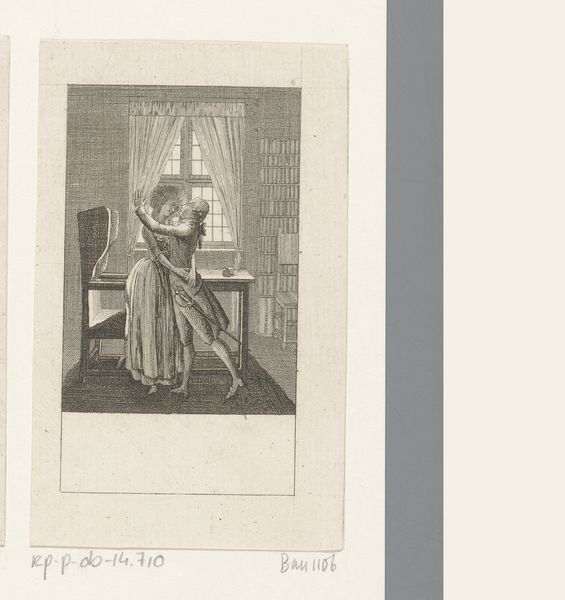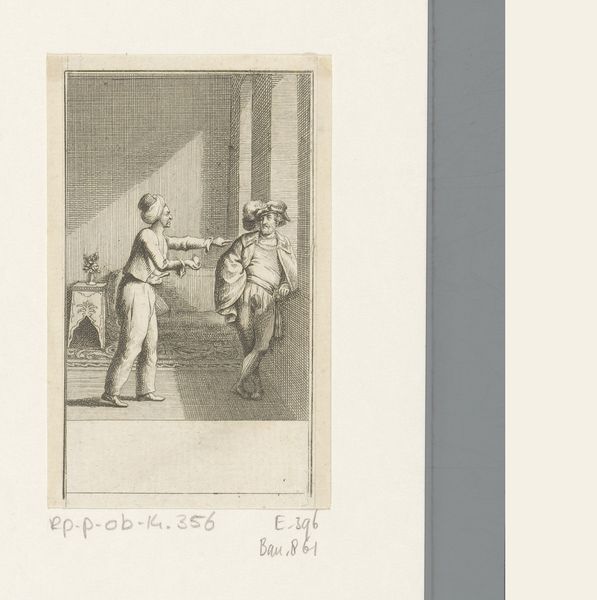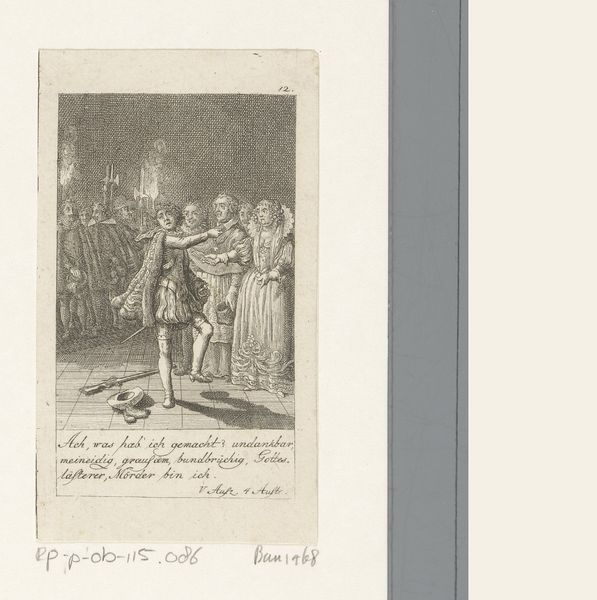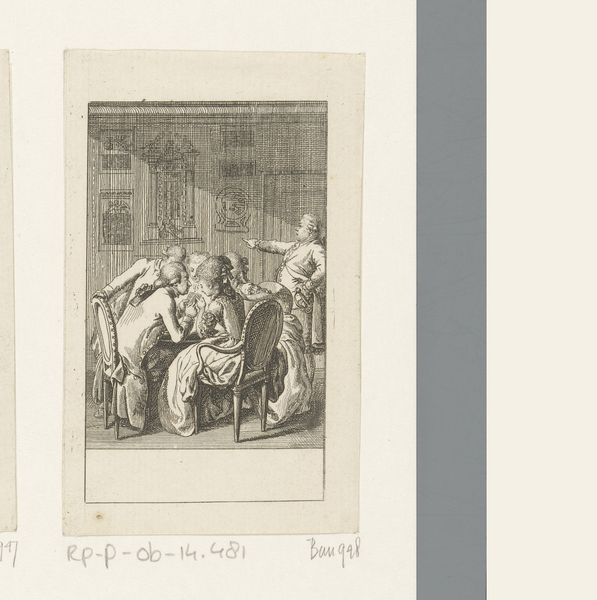
Miller noemt de schoonheid van zijn dochter een geschenk van de duivel 1785
0:00
0:00
danielnikolauschodowiecki
Rijksmuseum
Dimensions: height 112 mm, width 65 mm
Copyright: Rijks Museum: Open Domain
Editor: This print, "Miller noemt de schoonheid van zijn dochter een geschenk van de duivel" made in 1785 by Daniel Chodowiecki, has a very tense feel. There’s a clear conflict being portrayed; a man pointing aggressively towards two women. How do you interpret the emotions at play here? Curator: I see a powerful narrative unfolding, charged with cultural anxiety. The devil is always a handy trope, especially when patriarchal anxieties flare regarding female autonomy and, specifically, beauty. Look at the placement of the figures; a direct line of confrontation is visualized through gesture, placing father against the daughter’s appeal. Do you see any other potential symbolic components at work? Editor: The discarded shoe feels significant, a loss of innocence maybe? The stairway receding into darkness adds to the drama as well. Curator: Precisely! The shoe symbolizes vulnerability, a stumble from grace as some might see it, a powerful, loaded symbol. The dark staircase… a descent. All leading to societal judgment. And consider, engravings like these often served a moralizing purpose within the home, didn't they? Editor: Absolutely. It’s interesting how much cultural weight is packed into a relatively small image. I hadn't initially considered how the visual elements all reinforce the narrative and patriarchal values. Curator: Understanding such iconography enables a much richer appreciation of how our ancestors encoded warnings, values and social commentaries within seemingly simple pictures. What will *we* be leaving as symbolic evidence of our time? Editor: A thought-provoking question to consider. I will never look at an image in quite the same way again.
Comments
No comments
Be the first to comment and join the conversation on the ultimate creative platform.
